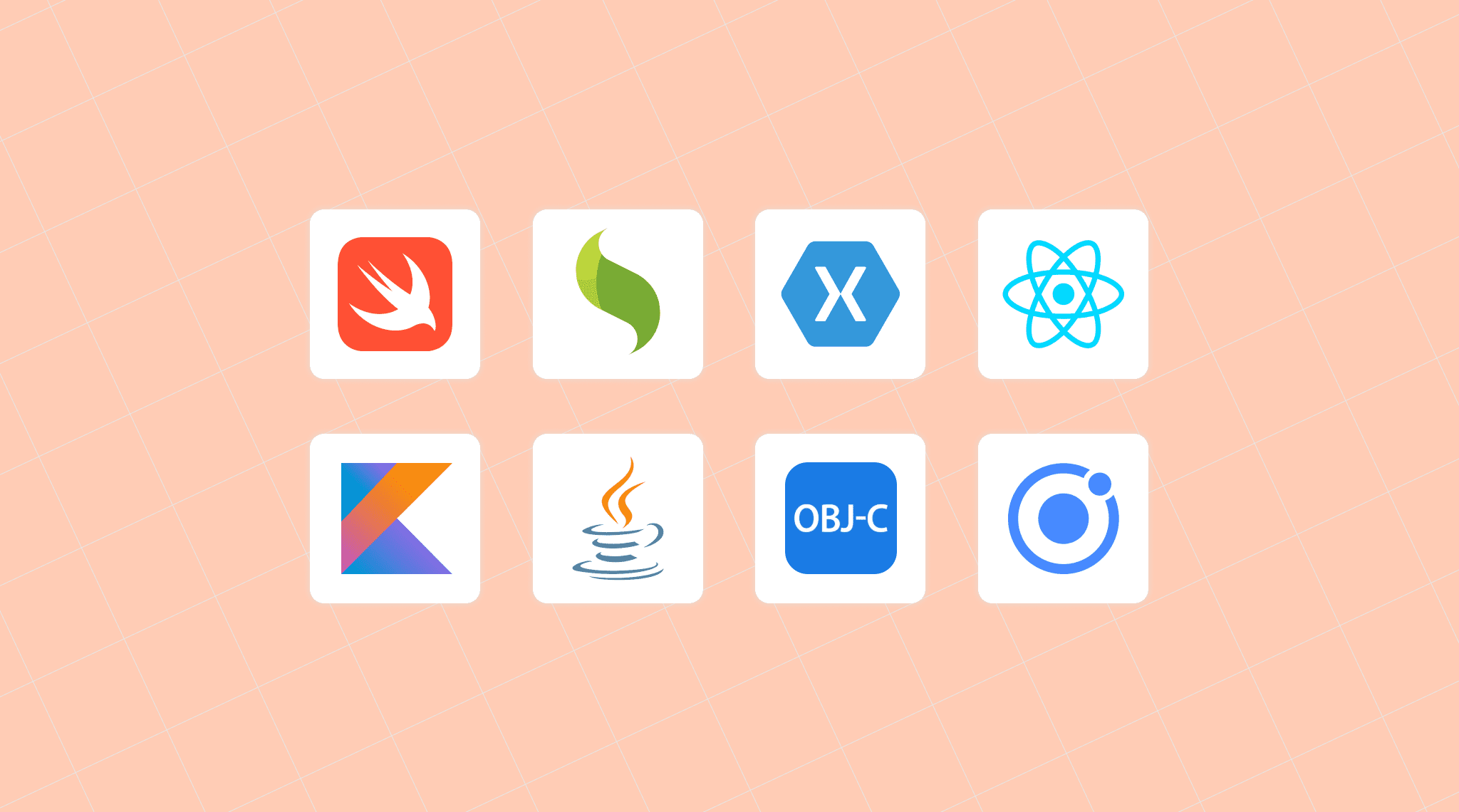A robust tech stack is the foundation of any app and integrating the relevant ones is an efficient way to boost product success. At present, the tech industry accounts for more than $1.9 trillion of the US GDP and this will typically increase powered by consumer spending. Therefore, when you build technologically sound apps, you add to your business prosperity while significantly contributing to the country’s economic growth.
For instance, AI-related investments are likely to increase 2.5% to 4% GDP over time and currently, it could reach approximately $100 million by 2025 in the US. Therefore, it is a good idea to get a clear conception of the ways to choose the right mobile app technology stack to make sure the application performs smoothly and your business is reaching its goals.
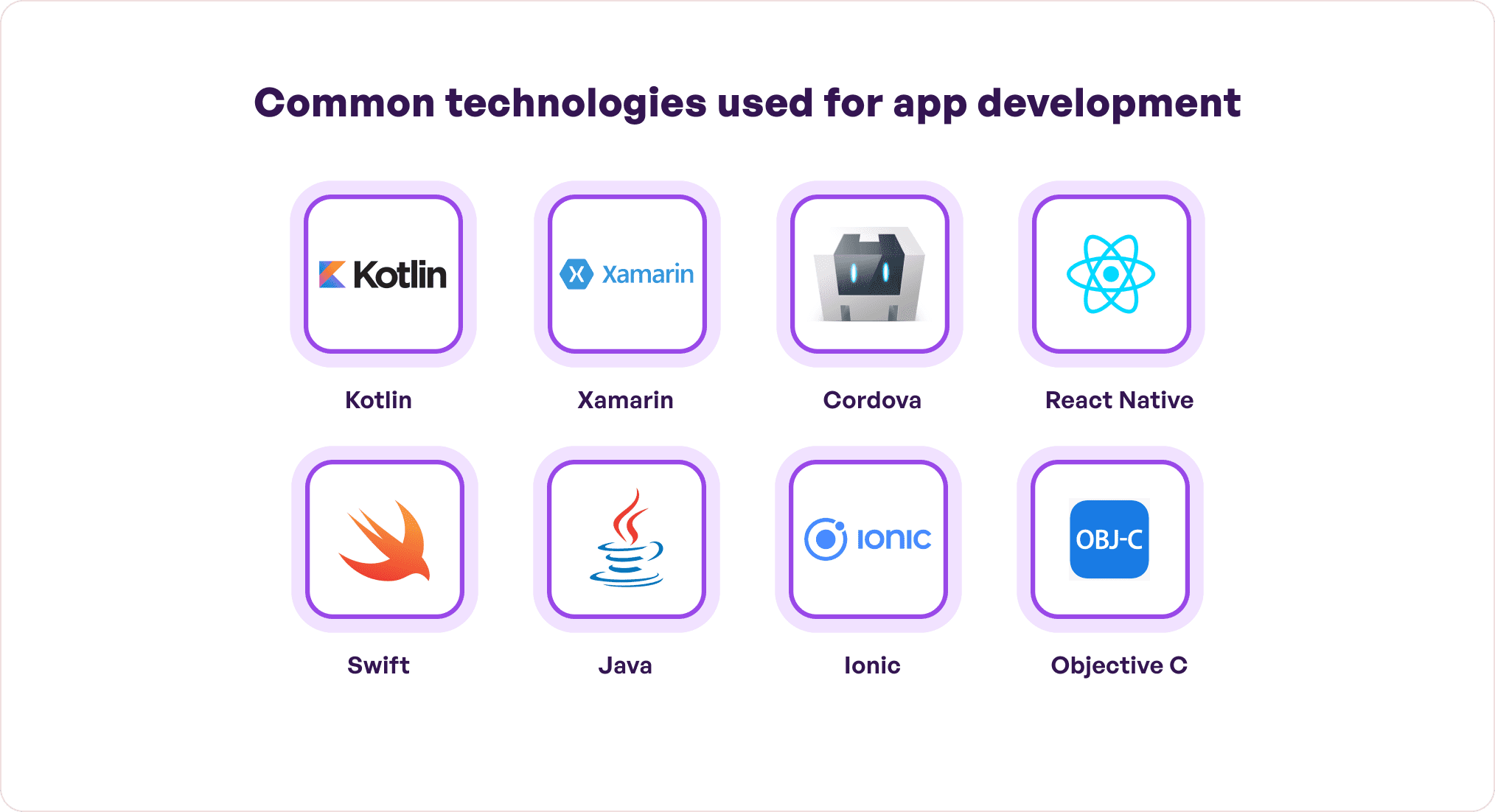
We at Simublade, an industry leader in app development, offer a discovery workshop session where you do not have to worry about the right technology. Our expert developers build tech stacks and architectural strategies to help you make informed choices. Now, read on to find relevant details around choosing the right mobile app tech stack.
Table of contents
Why should entrepreneurs care about tech stack?
Right from influencing the development process to refining customer experience – technology, like tools, languages, and frameworks, plays a pivotal role in creating new revenue streams. Wondering how?
Well, the most appropriate ones help build powerful, convenient, and scalable applications at significantly reduced development timeline and cost. The apps are less likely to be slow and unresponsive as well. A few top examples include :
MEAN: MongoDB, ExpressJS, AngularJS, NodeJS
MERN: MongoDB, ExpressJS, React Native,Redux
Each element in the stack can be modified and tailored as per business requirements to make sure that they facilitate quick development, testing and launch, that too error-free.
Further, stacking suitable technologies means streamlined workflows and defines capabilities and functionalities of a product. Altogether, this positions your business way ahead of competitors and helps you win the tech race.
Components of a good mobile app tech stack
A high-performance mobile app tech stack is a strategic mix of several elements which businesses must know to stay well-informed. Here’s a look:
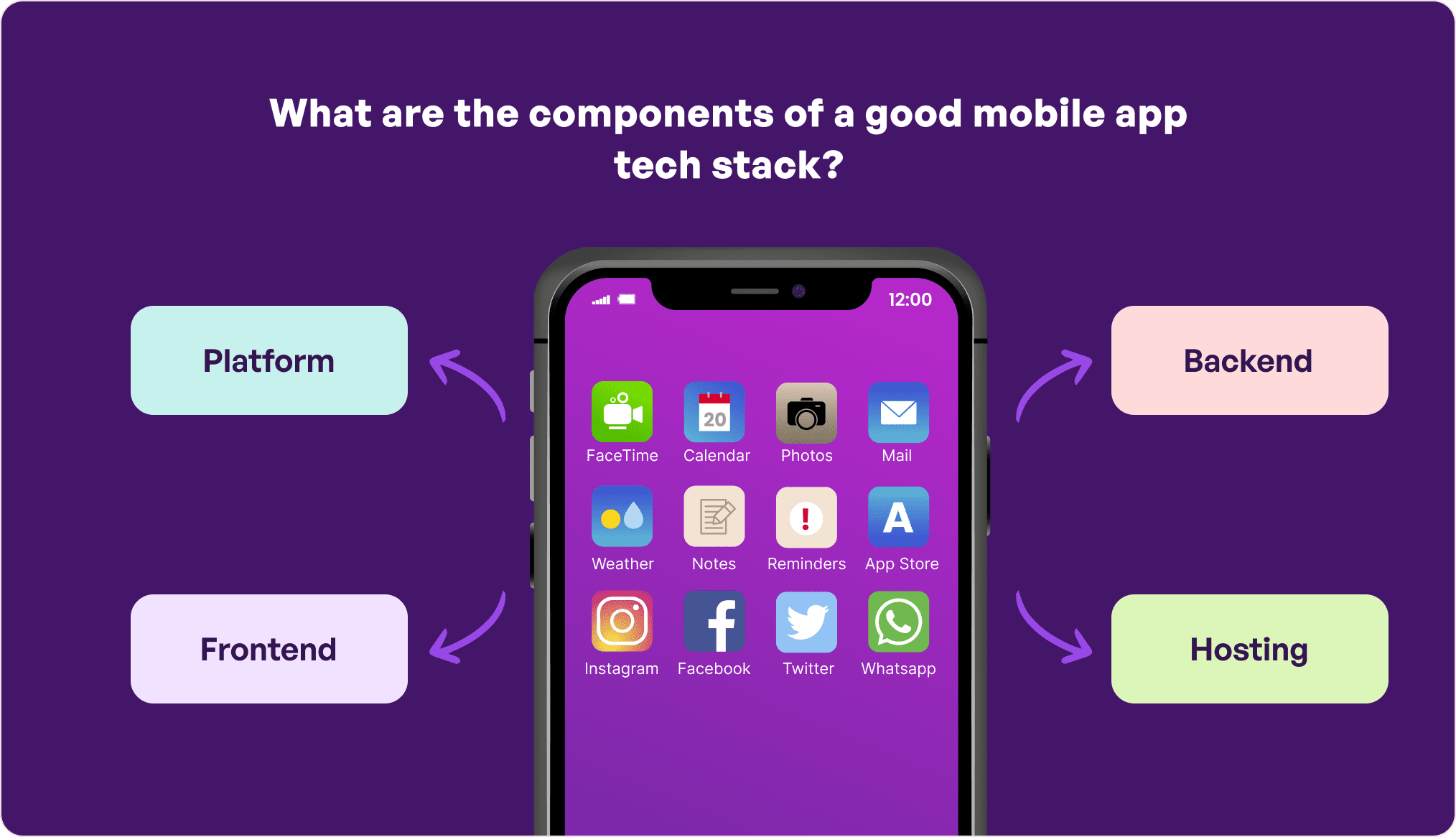
Platform
This is the base or the underlying environment where an app is developed, tested and deployed on different platforms to manage software applications. It typically consists of APIs, libraries, interfaces, analytics, integrations, MBaaS, and native, hybrid, and web app development capabilities.
Frontend
This layer includes multiple tools and frameworks like HTML, JavaScript, Flutter , React, and Python, and Web Assembly that helps create an interface that interacts with users. For instance, they ensure navigation with no hiccups.
Backend
This layer includes reliable server-side infrastructure, databases, microservice platforms, collaborations, frameworks, and servers which helps build business logic. Authentication, security, and business logic are also a part of the backend.
Hosting
This includes software environments like private or cloud servers that work with the backend components to improve cybersecurity, app flexibility and performance. In short, it helps meet the additional requirements of the application.
At Simublade’s mobile app development service, we have an extensive range of tech stack which is used in all projects, be it for a startup or for an enterprise. Now let us look at factors to consider when picking a technology stack for app development which will best serve your needs.
Factors to consider when selecting a mobile app tech stack
There are several critical factors and keeping them in mind means moving one step ahead towards picking the best tech stack for mobile apps. It is also necessary since tech stack is not a one-time investment but requires regular updates. Read on.
Target audience
The mobile app tech stack you choose must be able to offer incredible experience to your users. For this, consider in-depth research analysis to understand the following about the target audience to deliver what they need:
- preference for operating systems
- most commonly-used mobile device
- internet availability of the potential audience
- technological prowess of potential users
All of these will help determine the degree of customizations you can offer and help them enjoy seamless functionalities while you achieve the expected goals. For instance, providing facilities in African countries that frequently face internet outages.
Budget
Having a well-structured budget is necessary to protect your finances from getting derailed. It will further influence the tech stack you choose and so if you do not want to invest a considerable chunk into app development, a cross-platform mobile application would be ideal for your business. This would be more affordable than native apps since a single tech stack is enough for cross platform app development rather than having to invest in native ones for Android and iOS.
Market coverage
Coverage means where your target audience lives. It is a necessary factor to get an idea of the most popular operating systems in that area. For instance, the USA has 58.81% iOS market share and 40.81% Android share which means building native apps for Apple devices is likely to be more fruitful in terms of popularity and profits. On the other hand, Android dominates Asia, UK and Africa for its broad range of options and affordability. Therefore, identify these kinds of unique patterns before building the app.
Compatibility
The technology stack for mobile app development must be a good fit with the existing ones in the mobile app to reduce inconvenience, for example, bugs and security breaches. So, match a few aspects like your project size, complexity, scalability, community support, and maintenance with the current tech structure to ensure flawless functionality. For example, Kotlin language has an excellent compatibility with Java Virtual Machine.
App type
Considering the type of app, be it healthcare, fintech or SaaS, will help you choose the best tech stack for mobile apps. For example, health apps might require AI and GenAI, directions apps would need Android SDK to install 2GIS maps, and financial apps must ask for Blockchain integration for flawless payments.
Purpose of the app
This should be an analysis of the problem that your app will solve. For instance, you might require AR/VR technology as an e-commerce solution to let your users try clothes or furniture and help them make better purchase decisions. Therefore, having a clear idea of why you are building the app, instead of just focusing on increasing your audience base, will help businesses pick the right technology stack for mobile app development.
Time-to-market
When selecting a tech stack, start by considering what you need for building an MVP in alpha and beta versions. It is a minimum viable product, like a basic app, which typically needs just core functionalities and simple technologies to attract early users. The best part is that the cost to build an MVP is lower than a full-fledged app and can give you an idea of which tech stack would work the best for the final version. Altogether, besides getting an initial sneak peek into the tech stack, businesses can simultaneously ensure a successful entry into the competitive market.
Below are the different types of tech stack businesses can explore based on the type of their mobile application. Read on.
Technology stack for Android
Consider these technologies if you wish to build Android apps for your business and then hire software developers from Simublade accordingly.
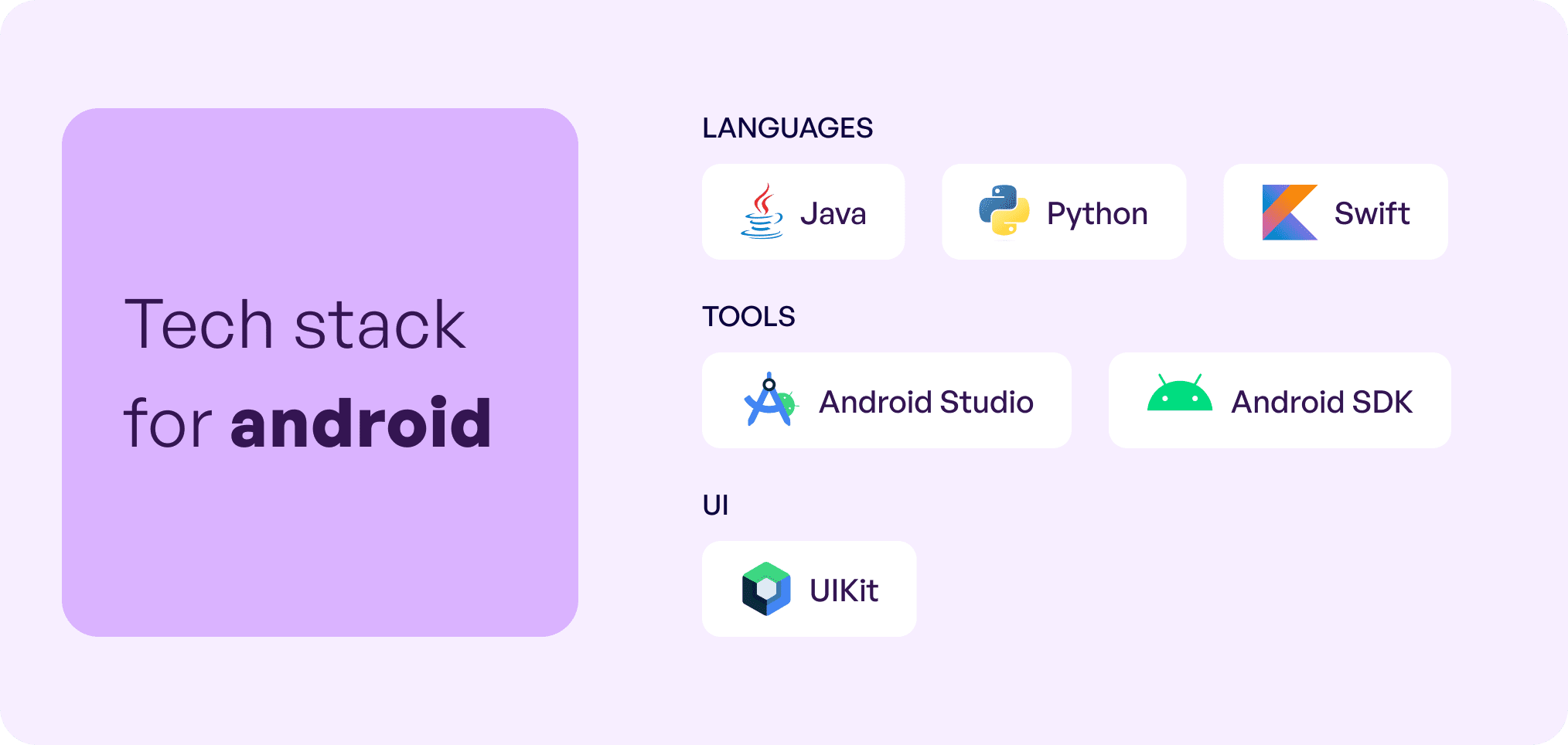
Java
This is a popular programming language in Android and is especially ideal to build data-driven and complicated applications. Java offers fantastic scalability with numerous libraries and tools which are typically open-source.
Kotlin
This is a highly stable and lightweight language offering clean codes. It is also concise and easy to operate for which Google declared it as its preferred language for Android development. In fact, Kotlin has significantly improved the productivity of 70% of developers who are using to drive their apps.
Python
This is a general programming language which is dynamically typed. It is popular among Android developers for its object-oriented and structured programming. Hire Python developers who will be able to craft solutions with advanced frameworks like Pyramid and Django to bring your app idea to life.
Android Studio
This tool is the official integrated development environment (IDE) for Google’s Android apps. Java is the main language used here followed by Kotlin. The main purpose of this software is to provide performance profilers to track CPU usage, identify network requests, and spot memory leaks. The best part is that all of this is free of cost.
Android SDK
This consists of multiple tools and frameworks which can be downloaded separately to develop Android apps. The most common elements here include documentations, code samples, and libraries along with a development manual. Debugger and emulator are also two core components of Android SDK. The main function of the tools is to close the gap between Android platform and an app.
Jetpack Compose
This open-source toolkit by Google is based on intuitive Kotlin APIs and is an essential tool to simplify building Android UI. Using it in your tech stack means an app that is refined and dynamic because coding is done in small chunks and can be edited easily. The best part of Jetpack Compose is that it works with fewer tools and less codes which helps to integrate it smoothly in Android workflow.
Technology stack for iOS
Consider these technologies if you wish to build iOS apps for your business.
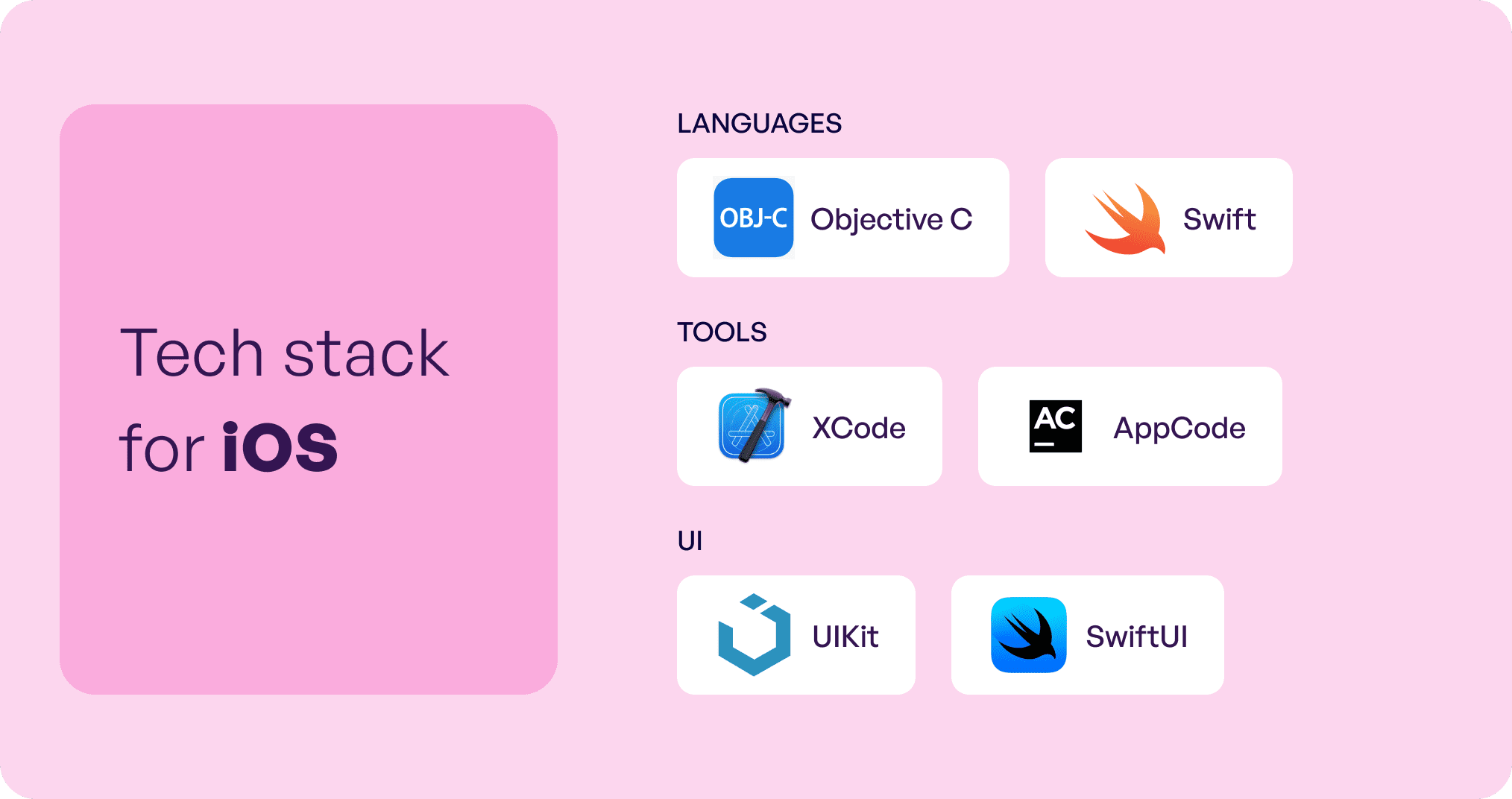
Objective C
Objective C was once the primary language to build iOS apps and is widely supported by Apple. Besides run-time decisions, its main focus was on conciseness and readability. Further, this language currently has extensive libraries and plenty of sophisticated features. However, since it was outdated in 2016, developers only prefer it to develop certain elements which will not be possible by Swift.
Swift
This is multi-paradigm programming used and is arguably the top favorite of Swift developers to build iOS apps. It has a safe syntax which ensures fewer mistakes and thus is often favored over Objective C. Further, Swift’s inline data support and text string manipulation reduces application size with promise flawless performance. Lastly, there are ample controls and protocols along with offering fantastic memory management.
Xcode
This is Apple’s official development system which offers an unified workflow for testing, coding, and debugging and UI. Xcode is also categorized as an integrated development environment (IDE) which is helpful in creating apps for iPhone, iPad, Mac, and Apple TV. Additionally, it offers tools for writing software in C and C++.
AppCode
AppCode is 100% compatible with Xcode without any extra configuration. This tool supports several languages like JavaScript, HTML, C, C++, and XPath. It is considered as an intelligent IDE for iOS development due to its proficiency in smart code completion, efficient code navigation, on-the-fly code analysis.
UIKit
This is a modular and lightweight framework which can develop a powerful iOS UI and manage app’s interactions seamlessly. This is done with the help of a large compilation of layout structures, views, controls, resources, templates, and styles along with handlers for delivery taps. Further, businesses can also get information on app traits and the environment in which the application is functioning.
SwiftUI
This is a wonderful framework for elegant user interface creation in a declarative way which developers maximize for iOS UI designs. For instance, the look and feel of apps can be customized along with streamlining interoperability when creating gestures and animations. Understand that Swift language is used for backend logic while SwiftUI helps with the frontend user interface.
Now that you have a clear understanding of native app technology stack, let us learn about how cross platform ones work.
Technology for cross-platform
Consider these hybrid app technology stack if you want to pick cross platform development for your business.
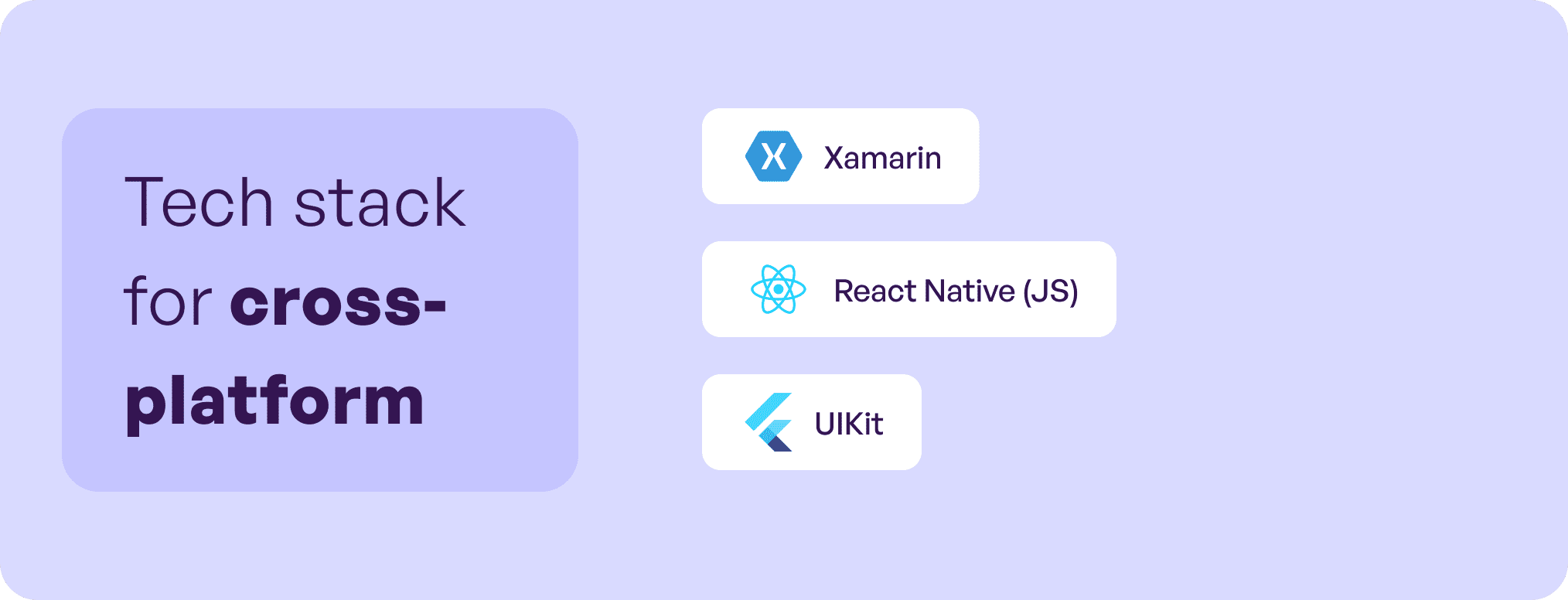
Xamarin
Xamarin is a cross-platform framework form Microsoft and uses extensive like C#,CSS, JavaScript, and .NET, making it is a natural choice when building an iOS or Android version of an app. There are many tools, libraries, and languages including Microsoft Visual Studio addition that allow developers to build apps within an IDE. Xamarin is typically helpful for businesses that prefer advanced visuals and user experience.
React Native (JS)
This software framework uses fundamental building blocks to build both iOS and Android UI. React Native (JS) helps build native-like UI by writing app logic and running it in JavaScript. A few popular backend options in React include Firebase, AWS Amplify, Supabase, and Back2app.
Flutter
Flutter is an open-source software development kit (SDK) created by Google and allows developers to build scalable mobile apps from a single codebase. The final applications turn out to be natively-compiled, eye-pleasing, fast, and highly productive.
These are the most popular tech stack for cross-platform mobile app development and are officially supported by both Apple and Google. At our mobile app development company, we are passionate about technology and thus help you get nothing but the best and thus your app idea turns into viral reality.
Conclusion
The future of mobile app technology stack will be a blend of new tech with existing ones to achieve practical business goals. For instance, using OpenAI in app development extensively, beyond just coding, is a strong possibility. In fact, from AI integration to 5G connectivity, the application landscape has already come too far and will continue to tick-off incredible things down the line.
FAQs
Q. What is the best platform for mobile app development?
Ans. The best platform to develop apps includes Alpha Anywhere, Mendix, Unity Ads, Sencha, and React Native.
Q. How to choose the best technology stack for a mobile app?
Ans. Consider budget, specialized functionalities, and development team to be able to choose the best mobile application development technology stack.
Q. What are the common mistakes to avoid when choosing a tech stack for mobile apps?
Ans. Lack of tech stack knowledge, junk data, and doing it all alone with professional help are the top mistakes when choosing mobile app technology stack.
Q. What are the most popular frameworks for cross-platform mobile app development?
Ans. The most popular cross-platform app development frameworks are Flutter, React Native (JS) and Xamarin.
Q. How does the choice of tech stack impact the time and cost of mobile app development?
Ans. Choosing the right stack improves time efficiency and lowers the overall cost of building a native or hybrid application.


